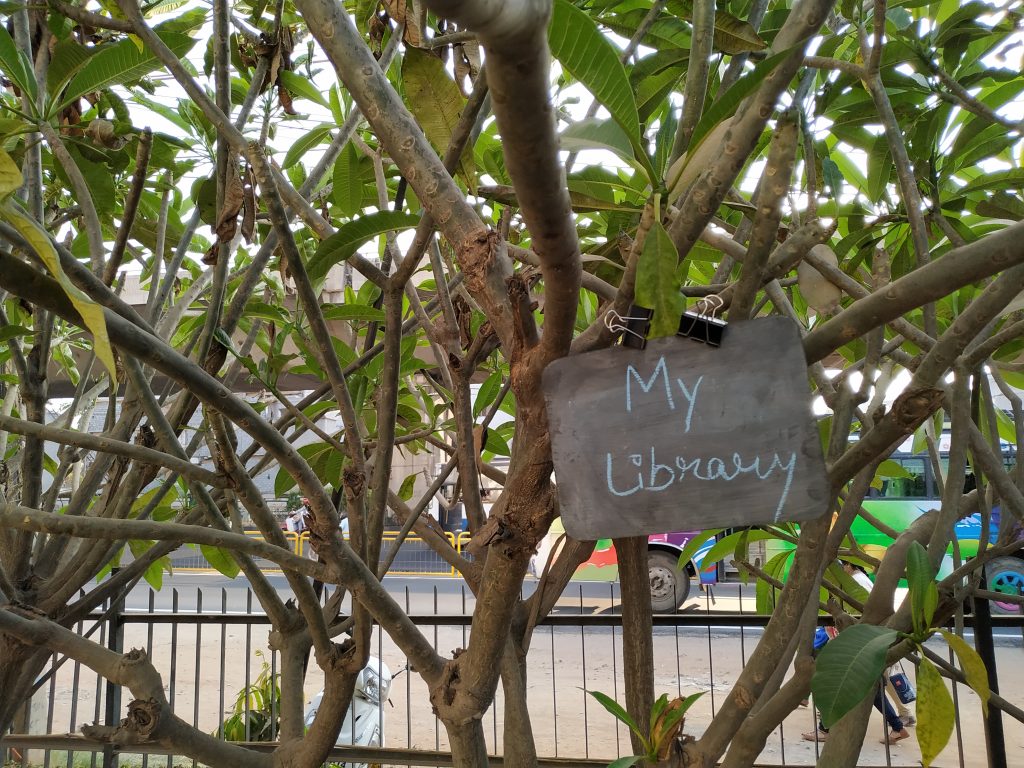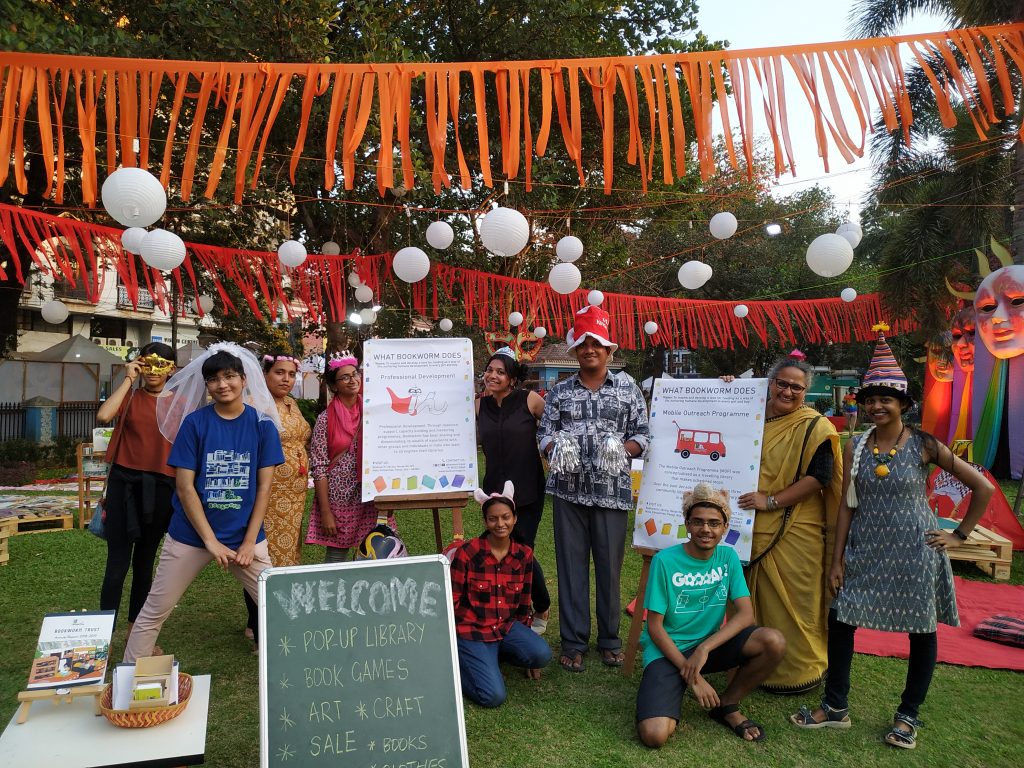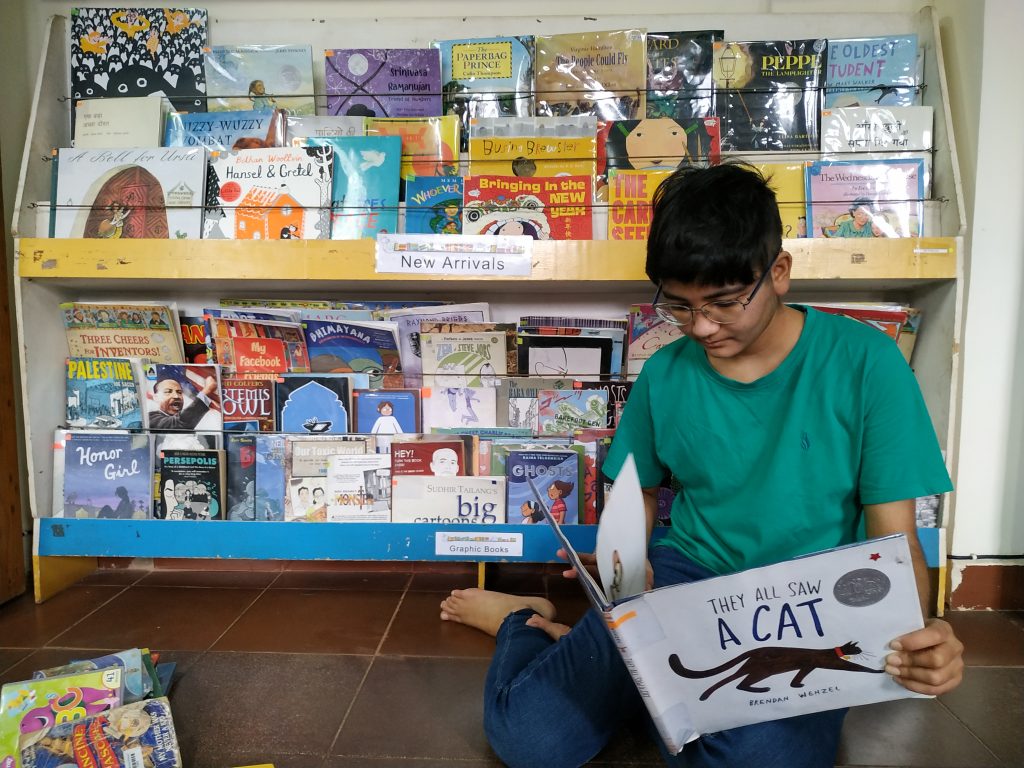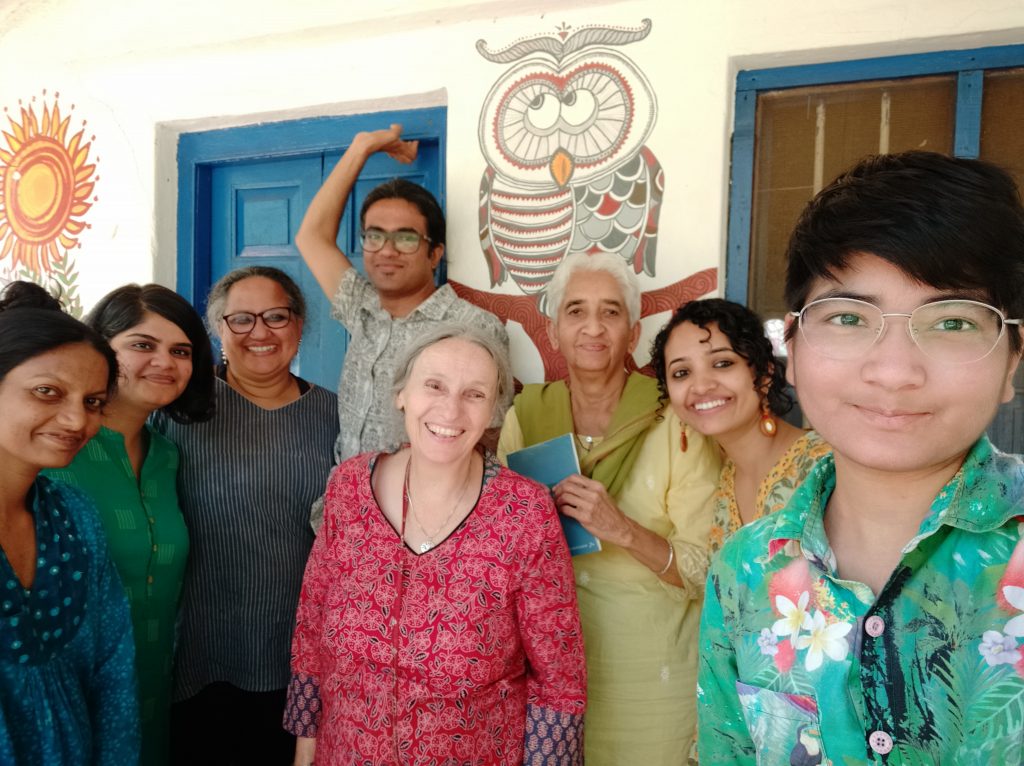I first came to Bookworm Library a day after 2020 began. At a crossroads in the Portuguese-era neighbourhood of Fontainhas, Panjim, between the Ourem creek and the Altinho hill steps down which a painted river cascades, is a white-walled, blue-trimmed, pitch-roofed treasure of a library. It used to be a school, but now it houses twenty-six thousand books, an optimistic, dedicated team, and a brilliantly simple vision for all children to be readers.
However, realizing this is not a plain affair – Bookworm has the library space & programs for children who visit; the Libraries in Schools program for schoolchildren; the Mobile Outreach Program for children in communities with no access to libraries; and the Professional Development Programs that aim to educate & sensitize adults about library work so that more children may be reached.
This library-related capacity-building is done in the form of Library Educator courses and workshops. I attended two of these workshops. One was in my first week at Bookworm, as a participant, which awoke from the recesses in my brain thoughts I never knew could turn into words, stringing together my own basic understanding with information that is delivered so carefully as to be most efficiently absorbed. I was beginning to enter the library in a way I had never done before.
The second workshop I attended was as part of the facilitating team, in Bangalore – the Basic Course for the Wipro Fellows. I got to see the work of people from Majuli to Maharashtra, from Odisha to Koramangla. The abstract and the practical were balanced and combined so that there was always a firm & rational takeaway that enabled ongoing reflection. I find that I learn best by envisioning information, and I could translate the points of discussion here intro drawings with much ease. But a marked difference between my first workshop in the library at Bookworm, Goa, and this one at a hotel conference room was the effect of the space. The sentiment – environment enhancing experience – prevailed among the participants too.
There is something about sitting on red-oxide tiles and bamboo mats surrounded by shelves teeming with books, hand-sewn applique pieces, windows framing sloped roofs, mango trees & the bright blue open sky, among a assiduous, caring team, that contributes to an atmosphere where one can absorb the most learning. The learning experience integrates all kinds of learning – visual, auditory, tactical & verbal; and all kinds of activities – games, reading, discussions, stitching, journalling & even visits to a bird sanctuary on a nearby island.
Intensely engaging workshops like these, along with other visits, seminars, meets and a virtually accessible content portal were intended to be part of a project whose team I joined. The proposal was to build a network of communities of practice, where individual library organizations were to work to create a greater impact, as a self-reliant collective. It was to include physical workshops, meets and visits, and a virtually accessible content portal. The imagination, planning, and budgeting of this project was meticulously detailed on all levels, abstract to logistical. But with the onset of the COVID-19 pandemic, the focus shifted to the virtual content portal for it to function as an interactive platform.
The rate of proliferation of the coronavirus infection created uncertainties everyday. It became increasingly hard to be sure of what we knew and what we did not. Previously, what had been straightforward and self-informed – like decision-making or ideating steps forward – turned into hours of circular thinking interspersed with worry. As a worker, a citizen, a daughter, a friend, a cat-mother, the threat of the pandemic loomed close. I could never be sure of how close the disease was, or how protected I was, if I would ever recover from it, if we as a society could recover from it, if our lives in the future would be familiar to us; if our lives had a future at all.
The worry was reflected by a corporate lens too – libraries being deemed non-essential questioned the legitimacy of our need for funds. Much of library work involves real-life human interaction, and in a matter of weeks we had to ideate its transfer to an online space. All programming was indefinitely postponed, to the point of us not being sure that the postponement would ever end. I was even newer to this field of work two months ago and every one of my thoughts was wrought with the possibility of debasing the vision of a not-for-profit library organization. Finally reiterations from the team that we were all in this together led me to gain some confidence in the work that I was to do.
With the renewed focus and ever-expanding opportunities for virtual engagement, we began work on the online platform. We decided to start with a survey to assess the needs of library educators across the country, and simultaneously, the collation of content. The survey would give us an idea of their ability to access the internet, their satisfaction with currently available resources, and what resources they would like to have access to.
Surveys used to seem simple enough to me, but I learnt about the process that goes into designing them – we would need to know the demographics of the participants, like location and language of communication. Exploratory questions asked about usage and topics, and confirmatory questions asked for responses about ideas we had. Then came the identification of a set of persons with whom we could pilot the survey and who we felt could give us critical feedback. Keeping with the larger values of accessibility, we used simple language, short questions, and offered support in the form of translations and oral interviews.
Data from the pilot group’s responses was parsed into wider categories that would make it easier for participants to fill in. We sent out the survey to one hundred and eighty-five people, including seventeen nodal persons who spread it to their specific networks, such as teacher networks, community librarians, NGO fellows, and more. We aimed to reach library educators, librarians, school teachers, NGOs, reading initiatives, book clubs, authors, illustrators, publishers and book distributors, and the general public who had an interest in libraries. We got back a hundred and thirty-three responses – twenty-nine more than our minimum target.
Meanwhile, we were also asked to create a basic library educators’ course for our online platform. Uncertainty rendering us unable to plan our programs, opportunities for furthering library education and children’s reading began to be seen in opposition to the survival of our organization. Much, much more of our time and energy went into this rapidly developing project than we had originally expected.
Despite the looming doubts and the anxiety of a future unknown, the team has been so driven and positive, and that has helped me personally to accept the present, distinct from the future. I mention the word “team”a lot because this is a kind of teamwork that I am glad to be able to experience for perhaps the first time. In addition to the strengths, talents & intellect of each person, the cohesiveness, adaptability & encouragement with which the team works is something I greatly appreciate.
As we move forward, constructing, collating & curating various offerings of an online platform, there is growing hope. Hope that more resources are accessed by more people, who are made more aware & sensitized to library work, and more children engaging with books – something that is essential in a time of crisis and should always be.




